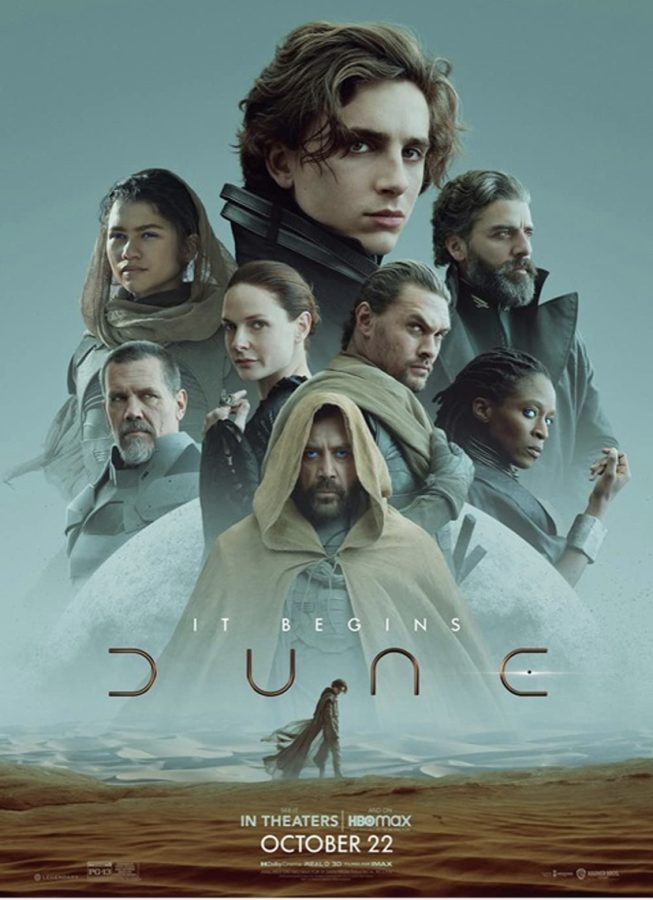‘Dune’: third time’s a charm
What else can be written that hasn’t already about Frank Herbert’s “Dune”?
That question can be answered two ways. Book or movie?
For the book — not a lot. The futuristic space saga– seen as a meditation on statecraft, leadership and politics– has been critiqued for its own critiques and spawned much debate within its fanbase.
As for the film, despite the massive influence the story had on works like “Star Wars” and the Sci-Fi genre writ large, Hollywood hasn’t been able to replicate the magic.
The first major film adaptation came after a scrapped project that would have included Salvador Dali and Orson Welles. It would eventually be directed by a rising David Lynch in 1984 with a different cast and production. It was, to the eyes of many discerning moviegoers both then and now, too Lynchian, complete with the director’s trademark idiosyncratic quirkiness and stylized campiness (starring Kyle Maclachlan of “Twin Peaks” fame as main character Paul Atreides). The costumes, to put it bluntly, were distracting, already unique characters were made into oddballs and the movie made the transition to a cult classic.
The second adaptation (2000) was a made-for-TV miniseries. It was, well, made for TV. Fitting a space epic that’s based on several planets including one that is a vast desert filled with giant worms on a 20-inch screen is a fool’s errand.
Now the latest adaptation (2021) from director Denis Villeneuve has tempered the inherent weakness of former adaptations by playing to the strengths of the source material. He makes good use of a fat studio budget (more than $165 million), including impressive special effects (The Worms!) and A-list actors such as Timothée Chalamet in the role of Paul, along with an excellent Hans Zimmer score that is admirable for being one of the composer’s best in an already impressive resume. But Herbert’s attention to the details of political intricacy, historical and cultural allusion and psychedelia-inspired worldbuilding does the hard, and interesting work.
All the same, those familiar with Villeneuve’s work can spot his hand. In “Sicario” (2015), the Sonoran desert was a character all in itself, a triumph of scale in directing that emphasized loneliness, futility, desolation. Landscape shots put the characters into the environment, rather than separating their interpersonal, political and violent conflicts from the natural world. The wants, pursuits and goals of the desert Fremen of Dune — and the Narcos and FBI agents of Sicario — are contextualized and explained by the oppressive environments they live in.
In “Dune,” the Fremen, people of the namesake desert Planet Dune, also known as Arrakis, are in a constant struggle against the elements. Their conflict is not just one of surviving nature, but taming it. Not only do they wish to throw off the oppressive yoke of the Harkonnen empire, but they long for water, something far more necessary than the valuable and psychedelic “Spice” that every powerful figure, including Paul’s father, exploits from their planet.
Source material can be the downfall, or the saving grace, of theatrical or film adaptations.
The problems with “Dune” the movie are mostly the same problems of “Dune” the book, by nature of the French director’s faithful adaptation. Though the all-female society of “Bene Gesserit” sorcerers are among the most powerful groups in this galaxy, women are mostly defined by institutional rather than individual goals. Paul’s mother, Jessica (Rebecca Ferguson), though powerful and gifted, rarely uses her almost magic powers other than in the service of her “husband’s” kingdom (though she is really a concubine) and is often seen as more valuable for her childbearing than anything else.
Chalamet’s interpretation of Paul is less nuanced and more glorified than in the books, though this could possibly be due to his lukewarm performance rather than anything else. Only very briefly are Paul’s powers of foresight used as a warning of what his unchecked power and leadership could look like, meaning the audience might forget an idea that continues to be an integral plotline throughout the series. The Fremen are also oftentimes lauded for simply their military and combative qualities rather than portrayed as a nuanced people who deserve collective liberation and fair access to basic resources.
David Lynch’s version was odd, yes, but one of the major problems with his incarnation was that it tried to fit the entire story of “Dune,” 800 pages worth, into one movie. It’s no wonder the first “Dune” is technically split into three installments of the story in one book, meaning the reader will not necessarily have to finish an 800-page brick in order to find out the fate of Paul Atreides all at once.
Villeneuve has his work cut out for him. The rest of the story is much more complicated and makes more use of Paul’s powers of foresight, along with more appearances from Zendaya’s Fremen character Chani, rather than using her simply as a symbol. As much as the books are a portrayal of the tightrope of power, the coming movie in the Dune blockbuster saga will be a test of Villeneuve’s skills as a director, and whether he can find the right way to balance the line between faithful and transcendent adaptation.
Your donations directly fund the Lane Tech student journalism program—covering essential costs like website hosting and technology not supported by our school or district. Your generosity empowers our student reporters to investigate, write, and publish impactful stories that matter to our school community.
This website is more than a publishing platform—it's an archive, a research tool, and a source of truth. Every dollar helps us preserve and grow this resource so future students can learn from and build on the work being done today.
Thank you for supporting the next generation of journalists at Lane Tech College Prep!

Aidan is a senior in his second year at the Champion. In his spare time, Aidan likes reading, watching and playing soccer and re-watching The Sopranos....






